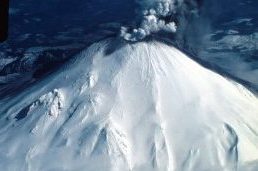
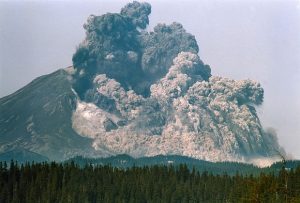 Most people who were alive in 1980, remember the catastrophic eruption of Mount Saint Helens on May 18th, but I wonder how many people…at least people who didn’t live in Washington state at that time…remember the earlier eruption that took place on March 29th. Volcanic eruptions don’t usually bring loss of life these days, because there are so many warning signs. That is what made the 57 lives lost to the Mount Saint Helens blast on May 18th so devastating. The warnings were there. The people were told, but the ones who lost their lives chose to stay in the area anyway, despite the glaring changes in the mountain and the urgent warnings to stay away. We had all heard that there was a distinct possibility that the mountain was going to blow. It was not just the people in Washington who were warned, but all across the nation too. I vividly remember being told what to expect when the mountain blew, because they knew the ash would encircle the entire Earth before it was all said and done.
Most people who were alive in 1980, remember the catastrophic eruption of Mount Saint Helens on May 18th, but I wonder how many people…at least people who didn’t live in Washington state at that time…remember the earlier eruption that took place on March 29th. Volcanic eruptions don’t usually bring loss of life these days, because there are so many warning signs. That is what made the 57 lives lost to the Mount Saint Helens blast on May 18th so devastating. The warnings were there. The people were told, but the ones who lost their lives chose to stay in the area anyway, despite the glaring changes in the mountain and the urgent warnings to stay away. We had all heard that there was a distinct possibility that the mountain was going to blow. It was not just the people in Washington who were warned, but all across the nation too. I vividly remember being told what to expect when the mountain blew, because they knew the ash would encircle the entire Earth before it was all said and done.
For a week, prior to March 29th, the area had been hit with small earthquakes below the mountain. These earthquakes were an indication that magma had begun to move below the volcano. On March 20, at 3:45pm Pacific Standard Time, a shallow magnitude 4.2 earthquake centered below the volcano’s north flank, signaled the volcano’s violent return from 123 years of hibernation. Over the 20th and 21st, 174 earthquakes of 2.6 or greater hit the area. At 12:36pm on March 27th, phreatic eruptions (explosions of steam caused by magma 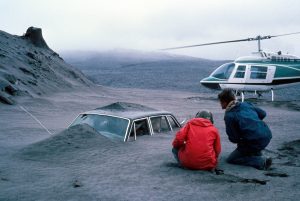
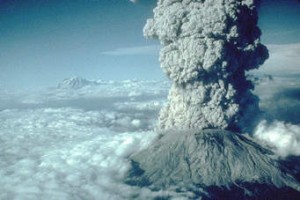 suddenly heating groundwater) ejected and smashed rock from within the old summit crater, opening a new crater 250 feet wide, and sending an ash column about 7,000 feet into the air. On March 29th, an eruption of Mount Saint Helens blasted a mushroom cloud over most of the state of Washington. Then on May 18, 1980, came the catastrophic blast that took the lives of those who had stayed, even with the many warning signs, and public warnings.
suddenly heating groundwater) ejected and smashed rock from within the old summit crater, opening a new crater 250 feet wide, and sending an ash column about 7,000 feet into the air. On March 29th, an eruption of Mount Saint Helens blasted a mushroom cloud over most of the state of Washington. Then on May 18, 1980, came the catastrophic blast that took the lives of those who had stayed, even with the many warning signs, and public warnings.
I understand the rights of people to make their own decisions concerning their safety, but when warnings are given, the choices people make need to be taken into account before allowing any lawsuits to take place. Of course, as with any kind of disaster, people want someone to blame for the pain they are feeling over the loss of their loved ones. In this case it appears that the safe zone might have been miscalculated, but it is my belief that we are also responsible for our own safety. I remember thinking that I didn’t want to be anywhere near that mountain in those days. Of the 57 people killed, the Weyerhaeuser Company and representatives of 14 victims of the Mount Saint Helens’ 1980 eruption filed lawsuits. The plaintiffs alleged in a King County Superior Court suit that Weyerhaeuser misrepresented the danger posed by the volcano and misled loggers and others into believing it was safe to be near the peak. Maybe they did, but the trial ended in a hung jury. They could not agree either. To me it seems as if this blast was nothing like the normal eruptions people knew about. In the end, the plaintiffs settled out of court for a reported $225,000, but the forest products company still denies 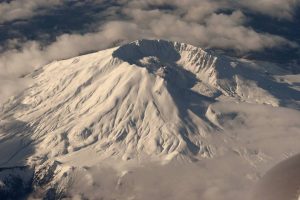
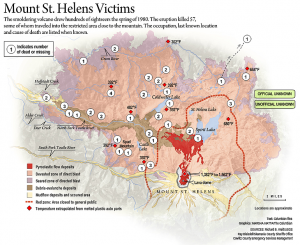 liability. I don’t claim to know whether or not these 14 victims were wronged or if they simply didn’t take their own safety into account when they went too near the action. I do know that at the time, it made no sense to me to be anywhere near a mountain that was so filled with pressure that it was bulging. I thought that was a warning in itself. I remember the public warnings about the mountain. It simply made no sense to take the chance.
liability. I don’t claim to know whether or not these 14 victims were wronged or if they simply didn’t take their own safety into account when they went too near the action. I do know that at the time, it made no sense to me to be anywhere near a mountain that was so filled with pressure that it was bulging. I thought that was a warning in itself. I remember the public warnings about the mountain. It simply made no sense to take the chance.


9 Responses to Warning Ignored